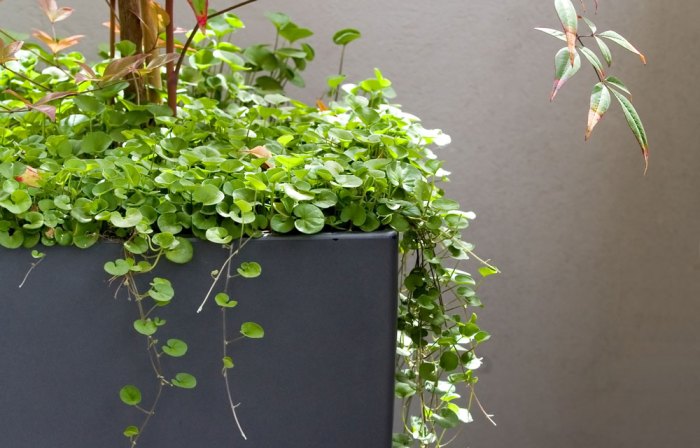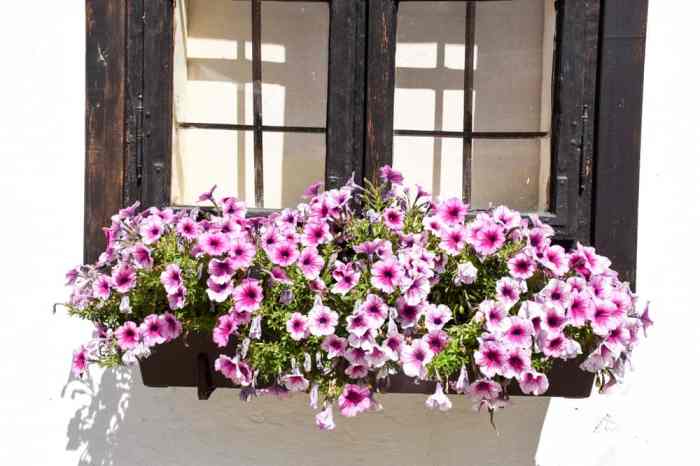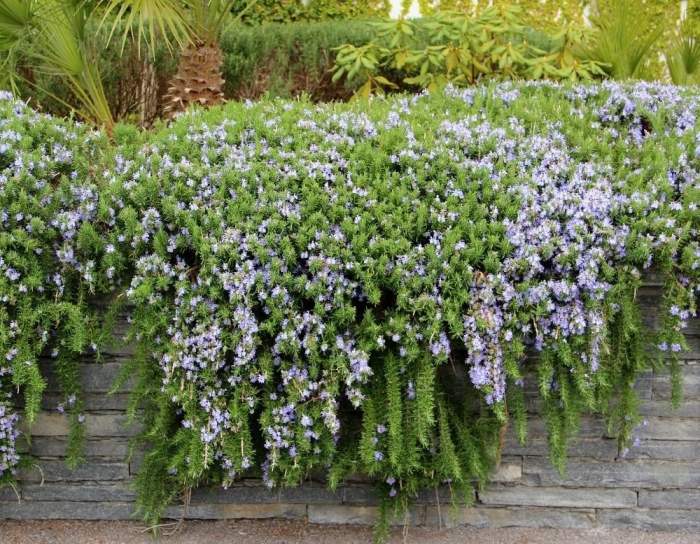Best indoor cascading plants are a captivating way to add a touch of nature and elegance to any indoor space. From trailing vines to lush foliage, these plants offer a unique and visually appealing way to enhance your home décor.
This guide will delve into the world of indoor cascading plants, providing you with the knowledge and inspiration to create a thriving indoor oasis.
In this comprehensive guide, we will explore the key characteristics to consider when selecting indoor cascading plants, create optimal growing conditions, and showcase creative ways to incorporate these plants into various indoor spaces. We will also cover essential care and maintenance tips, as well as advanced techniques to enhance the growth and appearance of your cascading plants.
Identifying Suitable Plant Species

When selecting indoor cascading plants, several key characteristics should be considered:
Firstly, consider the size and shape of the plant. Some cascading plants, such as pothos and philodendron, can grow quite large and may require significant space. Others, such as string of pearls and burro’s tail, are more compact and can be accommodated in smaller areas.
Secondly, think about the light conditions in your home. Some cascading plants, such as spider plants and peace lilies, can tolerate low light levels, while others, such as variegated pothos and golden pothos, prefer brighter light.
Finally, consider the water and temperature requirements of the plant. Some cascading plants, such as ferns and maidenhair ferns, prefer moist soil and high humidity, while others, such as succulents and cacti, can tolerate drier conditions.
Popular and Visually Appealing Cascading Plant Species
Some popular and visually appealing cascading plant species include:
- Pothos ( Epipremnum aureum)
- Philodendron ( Philodendron scandens)
- String of pearls ( Senecio rowleyanus)
- Burro’s tail ( Sedum morganianum)
- Spider plant ( Chlorophytum comosum)
- Peace lily ( Spathiphyllum wallisii)
- Variegated pothos ( Epipremnum aureum‘Variegata’)
- Golden pothos ( Epipremnum aureum‘Golden’)
- Ferns ( Pteridophyta)
- Maidenhair ferns ( Adiantum)
- Succulents ( Crassulaceae)
- Cacti ( Cactaceae)
Creating Optimal Growing Conditions: Best Indoor Cascading Plants
Providing optimal growing conditions is crucial for thriving indoor cascading plants. Understanding their specific requirements for light, water, temperature, and humidity will promote healthy growth and enhance their aesthetic appeal.
Lighting
Most indoor cascading plants prefer bright, indirect light. Avoid placing them in direct sunlight, as this can scorch their leaves. East- or west-facing windows provide ideal lighting conditions. If natural light is insufficient, supplement with artificial grow lights to ensure adequate illumination.
Indoor cascading plants bring a touch of elegance and greenery to any space. For those looking to create a lush, vertical garden, beautiful trailing indoor plants offer a wide variety of options. These plants, with their long, flowing stems and vibrant foliage, complement the cascading effect of indoor waterfalls and create a tranquil ambiance.
From the delicate tendrils of ivy to the dramatic leaves of pothos, best indoor cascading plants add a touch of nature’s beauty to any indoor setting.
Watering
Water when the soil surface feels slightly dry to the touch. Overwatering can lead to root rot, while underwatering can stunt growth. Use well-draining potting mix and ensure pots have drainage holes to prevent waterlogging. Allow excess water to drain thoroughly after watering.
For those seeking to enhance their indoor spaces with a touch of cascading greenery, several options are available. From the delicate tendrils of the String of Pearls to the lush foliage of the Philodendron scandens, these plants add a graceful and elegant touch to any room.
For more information on indoor cascading plants and their care, visit Plants .
Temperature and Humidity
Maintain temperatures between 60-75°F (16-24°C) for most indoor cascading plants. They generally prefer higher humidity levels. Misting the leaves regularly or placing them on a pebble tray filled with water can increase humidity around the plants.
Designing with Cascading Plants
Incorporating cascading plants into indoor spaces adds a touch of elegance and natural beauty. By utilizing hanging baskets, trellises, and other support structures, you can create stunning vertical displays that draw the eye upwards.
Hanging baskets are a popular choice for cascading plants, as they allow you to showcase their flowing foliage without taking up floor space. Suspend baskets from the ceiling or mount them on walls for a dramatic effect. Trellises provide support for climbing plants, allowing them to grow upwards and create a lush green wall.
Freestanding trellises can be placed anywhere in the room, while wall-mounted trellises save space and add a touch of sophistication.
Other creative ways to display cascading plants include using macrame hangers, plant shelves, and even repurposed objects like old ladders or baskets. Experiment with different heights and arrangements to create unique and eye-catching displays that complement your decor.
Care and Maintenance
Proper care is crucial for maintaining the health and beauty of cascading plants. Regular watering, fertilizing, and pruning are essential, along with monitoring for pests and diseases.
Watering
Water regularly, allowing the soil to dry out slightly between waterings. Avoid overwatering, which can lead to root rot. Use room-temperature water and water deeply, allowing it to reach the roots.
Fertilizing
Fertilize monthly during the growing season with a balanced liquid fertilizer diluted to half strength. Stop fertilizing during the winter months when growth slows down.
Pruning
Prune regularly to remove dead or damaged leaves, and to encourage new growth. Prune stems back to a healthy node, just above where a new leaf is emerging.
Pests and Diseases
Cascading plants can be susceptible to common pests and diseases, such as aphids, mealybugs, and fungal infections. Treat infestations promptly with appropriate insecticides or fungicides.
Advanced Techniques for Enhancement

Pushing the boundaries of cascading plant cultivation, advanced techniques empower enthusiasts to elevate the growth and aesthetics of these captivating specimens. From manipulating growth direction to promoting lush foliage and propagating new plants, these techniques unlock a world of possibilities.
With their flowing stems and lush foliage, best indoor cascading plants add a touch of elegance and tranquility to any room. While many cascading plants are known for their aesthetic appeal, some also possess the ability to purify the air.
If you’re looking for plants that can both enhance your decor and improve your indoor air quality, consider incorporating best air purifying hanging plants into your collection. These plants, such as the Spider Plant, Peace Lily, and Golden Pothos, not only add a cascading effect to your space but also help remove harmful toxins from the air, creating a healthier and more inviting indoor environment.
Controlling Growth Direction
Guiding the growth of cascading plants allows for precise placement and shaping. Utilizing trellises, wire supports, or stakes, growers can gently encourage stems to grow in specific directions. This technique enables the creation of cascading displays that complement architectural features or highlight particular areas.
Best indoor cascading plants, known for their lush foliage and graceful trailing habit, add a touch of elegance to any room. However, for those with limited natural light, consider exploring best hanging plants for dark rooms . These shade-tolerant varieties, such as pothos, spider plants, and ferns, can thrive in low-light conditions, bringing a touch of greenery and style to dimly lit spaces.
Returning to the topic of best indoor cascading plants, they are an excellent choice for creating a vertical garden or adding a dramatic touch to shelves and windowsills.
Promoting Lush Foliage, Best indoor cascading plants
Fertilization and regular pruning play crucial roles in promoting lush, healthy foliage. Balanced fertilizers provide essential nutrients for optimal growth, while strategic pruning removes dead or overgrown leaves, allowing light to reach the interior of the plant and encouraging new growth.
Propagating Cascading Plants
Propagating cascading plants offers the opportunity to create new specimens and share the beauty with others. Stem cuttings or air layering techniques can be employed to replicate the desired traits of existing plants. With patience and proper care, these new plants will establish themselves and continue the cascading legacy.
Last Recap

With the information provided in this guide, you can confidently select, grow, and care for the best indoor cascading plants, transforming your living spaces into verdant havens. Whether you are a seasoned plant enthusiast or just starting your journey into the world of indoor gardening, this guide will empower you to create a beautiful and thriving indoor ecosystem.
Quick FAQs
What are the most popular indoor cascading plants?
Some of the most popular indoor cascading plants include pothos, philodendron, spider plants, and English ivy.
How often should I water my indoor cascading plants?
The frequency of watering will vary depending on the specific plant species, but a good rule of thumb is to water when the top inch of soil feels dry to the touch.
What are some creative ways to display indoor cascading plants?
You can display indoor cascading plants in hanging baskets, on trellises, or even in macrame hangers. Get creative and find ways to showcase their unique trailing foliage.